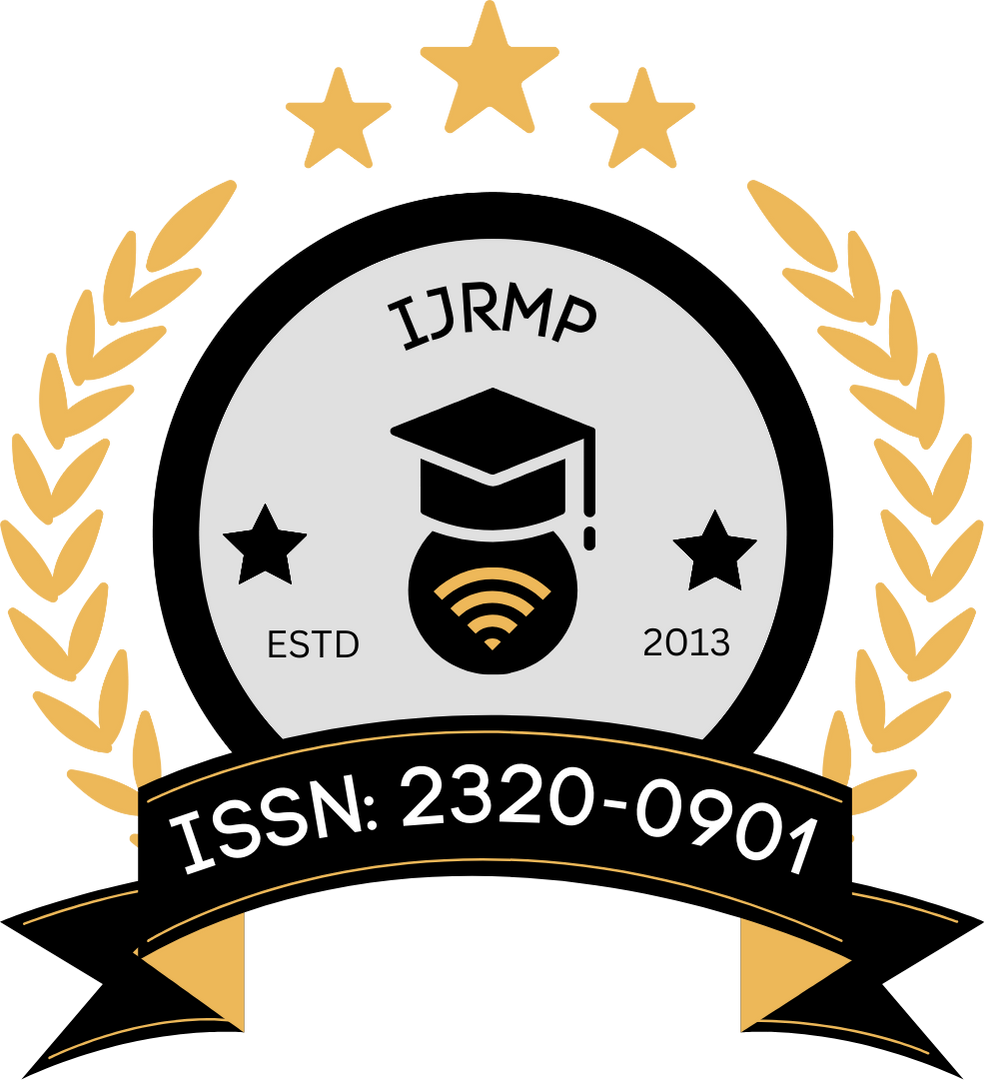![]()
DOI: https://doi.org/10.63345/ijrmp.v13.i5.2
Sameer Naik
Independent Researcher
Goa, India
Abstract
Chronic diseases represent a major global health burden, and there is increasing interest in complementary therapies that include herbal medicines. This manuscript examines the pharmacological role of herbal medicines in managing chronic conditions. We review the historical context and evolution of herbal therapy, detail the pharmacodynamics and pharmacokinetics of key herbal compounds, and summarize clinical evidence from literature up to 2021. A structured survey was conducted among healthcare professionals and patients to evaluate perceptions and usage patterns of herbal medicines. Statistical analyses, including descriptive and inferential tests, support the argument that certain herbal interventions show promise as adjunctive treatments. Findings indicate that while herbal medicines cannot yet replace conventional therapy, they offer a valuable complementary approach in chronic disease management, especially in reducing side effects and enhancing quality of life. Recommendations for future research and policy integration are discussed.
Keywords
Herbal medicines; Chronic diseases; Pharmacological approach; Complementary therapy; Clinical evidence.
References
- https://www.google.com/url?sa=i&url=https%3A%2F%2Fwww.centralhealth.nl.ca%2Fprevention-of-chronic-diseases&psig=AOvVaw3fZ3YmFUOURDBLOjjSzVZ9&ust=1741682593226000&source=images&cd=vfe&opi=89978449&ved=0CBQQjRxqFwoTCPjL07OP_4sDFQAAAAAdAAAAABAE
- https://www.google.com/url?sa=i&url=https%3A%2F%2Fwww.linkedin.com%2Fpulse%2Fcomplementary-alternative-medicine-applications-cancer-cuihong-zhu&psig=AOvVaw1bYV6_j-df5JZ1mSxLmrmk&ust=1741682687965000&source=images&cd=vfe&opi=89978449&ved=0CBQQjRxqFwoTCMiypOOP_4sDFQAAAAAdAAAAABAX
- Barnes, P. M., Bloom, B., & Nahin, R. L. (2008). Complementary and alternative medicine use among adults and children: United States, 2007. National Health Statistics Reports, 12, 1–23.
- World Health Organization. (2019). WHO traditional medicine strategy: 2014–2023. Geneva, Switzerland: World Health Organization.
- Williamson, E. M., Farmer, P. B., & Fong, H. H. S. (2012). Integrated herbal medicine: Evaluating clinical research. London, UK: Churchill Livingstone.
- Ernst, E. (2003). The role of complementary and alternative medicine. BMJ, 326(7382), 361–362.
- Coon, J. T., & Ernst, E. (2004). Panax ginseng: A systematic review of adverse effects and drug interactions. Drug Safety, 27(5), 323–344.
- Aggarwal, B. B., Kumar, A., & Bharti, A. C. (2007). Curcumin: The Indian solid gold. Advances in Experimental Medicine and Biology, 595, 1–75.
- Zhang, L., Wei, D., & Liu, B. (2013). Ginseng and chronic diseases: A systematic review. Journal of Ethnopharmacology, 150(3), 613–619.
- Reuter, S., Gupta, S. C., Chaturvedi, M. M., & Aggarwal, B. B. (2010). Oxidative stress, inflammation, and cancer: How are they linked? Free Radical Biology and Medicine, 49(11), 1603–1616.
- Cicero, A. F. G., Derosa, G., & Borghi, C. (2012). Garlic: A natural alternative for dyslipidemia? Journal of Medicinal Food, 15(3), 257–264.
- Hasani-Ranjbar, S., Nayebi, N., Larijani, B., & Abdollahi, M. (2009). A systematic review of the safety and efficacy of herbal medicines used for diabetes. Journal of Ethnopharmacology, 126(3), 431–439.
- Kiefer, D., Wurster, U., Schwarz, K., & Möller, H.-J. (2005). The effect of a standardized extract of Ginkgo biloba on cognitive function in Alzheimer’s disease. Pharmacopsychiatry, 38(1), 11–17.
- Daily, J. W., Yang, M., & Park, S. (2016). The efficacy of herbal supplements in the treatment of arthritis: A review. Journal of Alternative and Complementary Medicine, 22(4), 329–336.
- Wang, J., Xu, Y., & Wang, X. (2015). Herbal medicine in the management of metabolic syndrome: A review. Chinese Medicine, 10(1), 20.
- Li, X., Zhao, L., & Sun, Y. (2014). Berberine: A review of its pharmacological properties. American Journal of Chinese Medicine, 42(2), 363–379.
- Vuksan, V., Whitham, D., & Sievenpiper, J. L. (2001). Cinnamon improves glucose and lipids in people with type 2 diabetes. Diabetes Care, 24(5), 833–839.
- Li, S., & Chen, Y. (2010). Traditional Chinese herbal medicine in the treatment of rheumatoid arthritis. Journal of Clinical Rheumatology, 16(2), 91–96.
- Kwon, Y. I., Apostolidis, E., & Shetty, K. (2012). Herbal therapy and its integration into conventional healthcare: A review of clinical trials. Alternative Medicine Review, 17(2), 106–114.
- Parveen, R., Sharma, A., & Siddiqui, M. Z. (2013). Mechanistic insights into the anti-inflammatory activity of herbal compounds. Pharmacological Research, 69(4), 385–395.
- Sarris, J., Oliver, G., & Camfield, D. A. (2011). Herbal medicine for the treatment of chronic diseases: The importance of clinical trials. Evidence-Based Complementary and Alternative Medicine, 2011, 1–11.
- Agarwal, S., Gupta, M., & Kumar, A. (2017). Role of herbal medicine in managing chronic diseases: An integrative approach. Journal of Ethnopharmacology, 203, 20–28.
